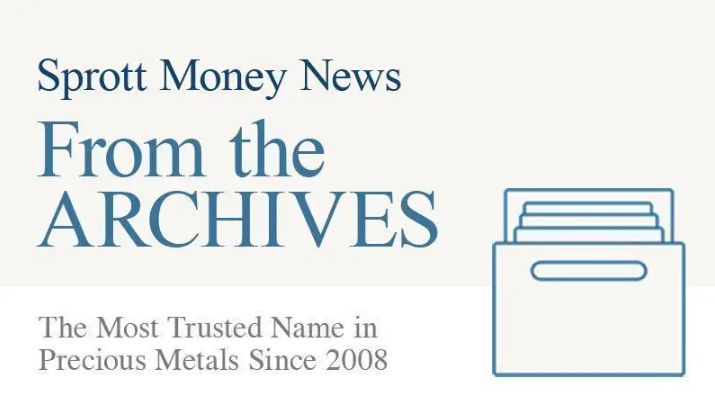September 21, 2017
To begin with, how exactly does one define “normalize” in reference to the Fed’s balance sheet? The Fed predictably held off raising rates again today. However, it said that beginning in October it would no longer re-invest proceeds from its Treasury and mortgage holdings and let the balance sheet “run off.”
Here’s the problem with letting the Treasuries and mortgage just mature: Treasuries never really “mature.” Rather, the maturities are “rolled forward” by refinancing the outstanding Treasuries due to mature. The Government also issues even more Treasurys to fund its reckless spending habits. Unless the Fed “reverse repos” the Treasurys right before they are refinanced by the Government, the money printed by the Fed to buy the Treasurys will remain in the banking system. I’m surprised no one has mentioned this minor little detail.
The Fed has also kicked the can down the road on hiking interest rates in conjunction with shoving their phony 1.5% inflation number up our collective ass. The Fed Funds rate has been below 1% since October 2008, or nine years. Quarter point interest rate hikes aren’t really hikes. we’re at 1% from zero in just under two years. That’s not “hiking” rates. Until they start doing the reverse-repos in $50-$100 billion chunks at least monthly, all this talk about “normalization” is nothing but the babble of children in the sandbox. I think the talk/threat of it is being used to slow down the decline in the dollar.
To justify its monetary policy, Yellen stated today that she’s, “very pleased in progress made in the labor market.” Again, how does one define progress? Here’s one graphic which shows that the labor market has been and continues to be a complete abortion:
The labor force participation rate (left y-axis) has been plunging since 2000. It’s currently below 63%. This means that over 37% of the working age population in the United States is not considered part of the labor force. That’s close to 100 million people between the ages of 15 and 64 who, for whatever reason, are not looking for a job or actively employed. A record number of those employed are working more than one part-time job in order to put food on table and a roof over the heads of their household. Good job Janet! Bravo!.
The blue line in the graph above shows the amount of dollars spent by the Government on welfare. Note the upward point acceleration in the rate of welfare spending correlates with the same point in time at which the labor force participation rate began to plunge. Again, nice work Janet!
The labor force participation rate is much closer to the true rate of unemployment in the United States. John Williams of Shadowstats.com has calculated the rate of unemployment using the methodology used by the Government a couple of decades ago and has shown that a “truer” rate of unemployment is closer to 23%.
The true level of unemployment is definitively the reason why the rate of welfare spending increased in correlation with the decline in those considered to be part of the labor force. It could also be shown using the Fed’s data that another portion of the plunging labor force participation rate is attributable to the acceleration in student loans outstanding. I would argue that part of the splurge in student loan funding, initiated by Obama, was used to keep potential job-seekers being forced by economic necessity from seeking jobs and therefore could be removed from the labor force definition, which in turn lowers the unemployment rate.
As I write this, Yellen is asserting that “U.S. economic performance has been good.
I’d like to get my hands on some of the opioids she must be abusing. Real retail sales have been dropping precipitously (the third largest retail store bankruptcy in history was filed yesterday), household debt is at an an all-time high, Government debt hits an all-time high every minute of the day and interest rates are at 5,000 year lows (sourced from King World News)
Note to Janet: near-zero cost of money is not in any way an attribute of an economy that is “doing well.” In fact, record levels of systemic debt and rising corporate and household bankruptcies are the symptoms of failed Central Bank economic and monetary policies. This is further reinforced by the record level of income disparity between the 1% highest income earners and the rest of the U.S. labor force.
The entire U.S. economic and financial system is collapsing. If the Fed truly follows through on its threat to “normalize” its balance sheet and raise rates, the U.S. will likely collapse sometime in the next couple of years. On other hand, up to this point since Bernanke’s famous “taper” speech in May 2013, most of the Fed’s statements with regard to hiking rates (hiking them for real) and reducing its balance sheet has been nothing but hot air. And in fact, unless the Fed reverse repos its balance sheet back to the banks, it’s assertion of “balance sheet normalization” is nothing more than another in long series of lies.
Don’t miss a golden opportunity.
Now that you’ve gained a deeper understanding about gold, it’s time to browse our selection of gold bars, coins, or exclusive Sprott Gold wafers.
About Sprott Money
Specializing in the sale of bullion, bullion storage and precious metals registered investments, there’s a reason Sprott Money is called “The Most Trusted Name in Precious Metals”.
Since 2008, our customers have trusted us to provide guidance, education, and superior customer service as we help build their holdings in precious metals—no matter the size of the portfolio. Chairman, Eric Sprott, and President, Larisa Sprott, are proud to head up one of the most well-known and reputable precious metal firms in North America. Learn more about Sprott Money.
Learn More
You Might Also Like:



















Looks like there are no comments yet.